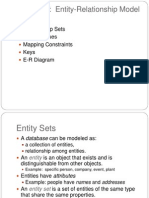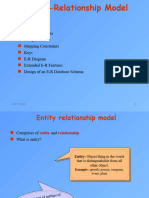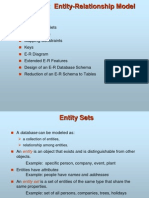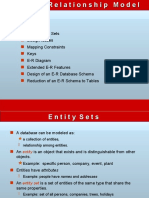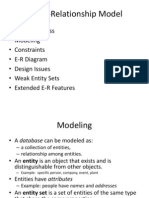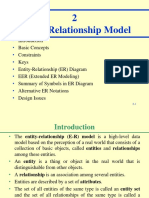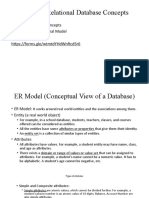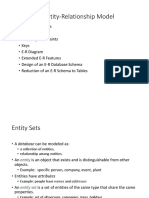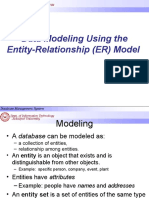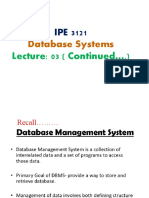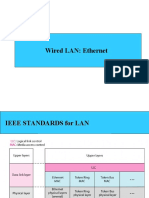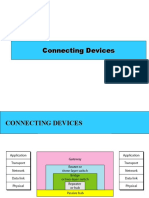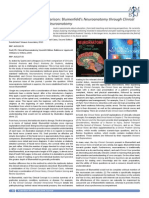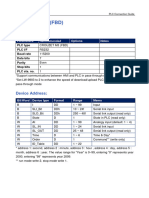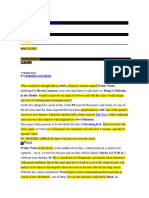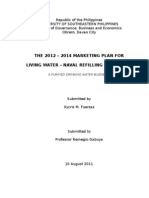0% found this document useful (0 votes)
92 views80 pagesChapter2 - ER Model
The Entity Relationship model allows for modeling of entities and relationships within a database. Key components include entity sets which represent collections of entities, relationship sets which define associations between entity sets, and attributes which provide descriptive properties of entities. The E-R diagram graphically depicts these components and additional elements such as keys, cardinalities, participation constraints, and specialization/generalization relationships between entity sets. The E-R model provides a conceptual framework for database design prior to implementation in a database schema.
Uploaded by
Rashika KhannaCopyright
© © All Rights Reserved
We take content rights seriously. If you suspect this is your content, claim it here.
Available Formats
Download as PDF, TXT or read online on Scribd
0% found this document useful (0 votes)
92 views80 pagesChapter2 - ER Model
The Entity Relationship model allows for modeling of entities and relationships within a database. Key components include entity sets which represent collections of entities, relationship sets which define associations between entity sets, and attributes which provide descriptive properties of entities. The E-R diagram graphically depicts these components and additional elements such as keys, cardinalities, participation constraints, and specialization/generalization relationships between entity sets. The E-R model provides a conceptual framework for database design prior to implementation in a database schema.
Uploaded by
Rashika KhannaCopyright
© © All Rights Reserved
We take content rights seriously. If you suspect this is your content, claim it here.
Available Formats
Download as PDF, TXT or read online on Scribd
/ 80




